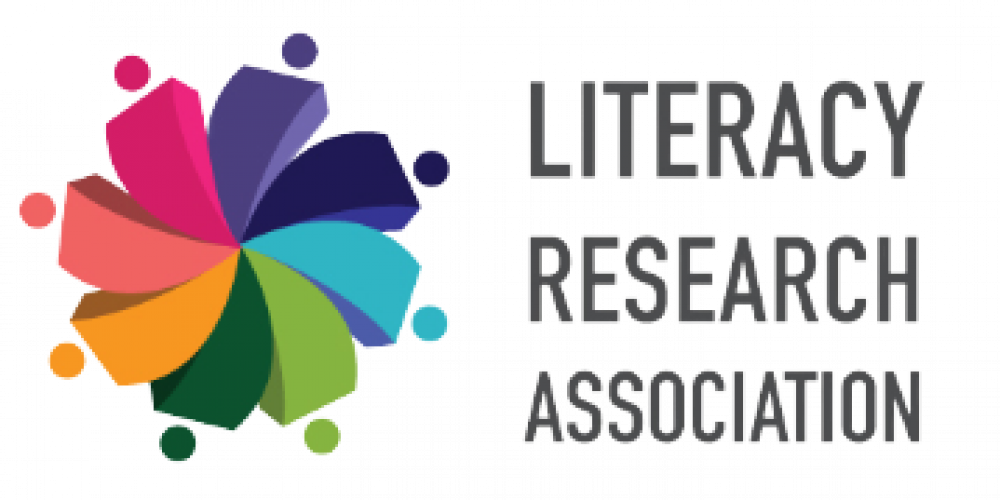The Science of Reading and the Media: How Do Current Reporting Patterns Cause Damage?
Maren Aukerman, University of Calgary
In the field of reading education, we are in the midst of what can fairly be characterized as a media crisis. In my first previous Critical Conversations contribution, I documented how reporting on the “science of reading” suffers from bias errors, that is, errors where a journalist takes sides and/or pushes an agenda rather than communicating a nuanced story. In my second piece, I detailed specific errors of insufficient understanding, that is, errors that reflect inadequate grasp of the field.
As a result, journalism frequently bestows unquestioned status to systematic phonics instruction while emphasizing other aspects of literacy learning far less. This instructional approach has come to be known in the popular press by the moniker “the science of reading,” even though actual research-based science of reading is far more nuanced and expansive. Furthermore, journalists often dismiss another approach to teaching called balanced literacy, an orientation supported by 59% of reading researchers 1 that advocates for a robust range of literacy learning opportunities that include phonics, comprehension, writing, and other forms of literacy development in contexts that motivate young literacy learners. 2
Error in the Media and Elsewhere Online
To recap, here are some common media errors:
Bias Errors
- Lack of balance in reporting. Reporting fails to include and/or respect varied perspectives.
- Sensationalistic “straw man” arguments. Reporting wrongly ascribes outlandish beliefs to those who advocate for balanced literacy, then proceeds to dismiss them by shredding those ideas.
- A myopic lens fetishizing phonics instruction. Reporting fails to highlight the many essential dimensions of good literacy instruction that go beyond phonics.
- Logical fallacies. Reporting faults balanced literacy for any and all struggles children have with learning to read, in the absence of causal evidence.
Errors of Insufficient Understanding
- Weak connection to actual research. Reporting misrepresents research findings and/or over-relies on a narrow slice of research – if it even cites research.
- Inaccurate, distorted use of terminology. Reporting explains concepts poorly, particularly those related to balanced literacy.
- Spurious claims that one approach is settled science. Reporting maintains that there is one right, research-based way to teach reading even though there is insufficient evidence for such a claim.
- Lack of context about previous phonics implementation attempts. Reporting omits information documenting the underwhelming results of previous phonics-heavy mandates.
Taken together, these errors raise serious questions about the trustworthiness of journalism about reading education. Professional journalists are not the only culprits: similar issues appear on many reading-related websites where, too often, biased and non-research-based rhetoric predominates. 3 For example, a viral infographic called the Ladder of Reading and Writing 4 claims that a “structured literacy” approach (i.e., intensive phonics) is “essential” for at least 50-60% of students and beneficial to nearly all students – with fine print maintaining those percentages are based on “the best available evidence” and pointing readers to the author’s website for more information. However, I found no peer-reviewed research to substantiate the percentages on that website or elsewhere. And the author described her process of assigning those percentages with considerable vagueness: “experts in the field were contacted for their feedback about this during the process [and] research articles were explored,” before she conceded that “There is no agreement on the percentages.” 5 Remarkably, that did not stop her from posting them.
Numerical estimates from such a flawed vetting process should have no place in anything calling itself “the science of reading.” Yet, the Ladder of Reading is widely distributed, showing up as unquestioned fact in multiple tweets and Facebook posts as well as on literacy-related websites across North America, from the Colorado Department of Education 6 to the International Dyslexia Association (IDA). 7 8 9 When journalists rely on such websites instead of peer-reviewed research, the questionable information becomes further amplified. For example, a recent Education Week article cited IDA when it claimed that most students “need explicit phonics and the rest can benefit from it”, closely echoing the Ladder of Reading on the IDA website. 10
When the media cannot be counted upon to paint a fully accurate, unbiased picture of research on early reading instruction, the consequences may be grim. Here are some of them: When the media fails to engage deeply with the fuller body of reading scholarship, advocates of an instructional technique can circumvent the need to make a compelling scholarly case for their perspective that is convincing to the research community. A perspective on what constitutes quality reading instruction that has convinced barely a fifth of researchers in the field 11 gets pitched in the media as a “research consensus.” 12 13 Those advocates speaking to reporters likely have the best of intentions and may genuinely believe their perspective is the most research-based one. But the passion of advocates does not displace the need for proper vetting. The media should be engaging substantively with a range of perspectives and – even more importantly – with the actual research literature, which tells a nuanced and complicated story about the teaching of reading in general and about the teaching of phonics specifically. In the absence of such engagement, advocacy rather than reading research has come to drive educational journalism, and ultimately public discourse and policy. There is huge irony in the fact that something billed as “the science of reading” may well be undermining the impact of real research on classroom practice, due in large part to lack of quality reporting. Districts are flocking to ramp up phonics teaching. 14 Politicians have jumped on the bandwagon, passing laws that mandate phonics-intensive reading instruction, place requirements on teacher training, and even require retention for some students on the sole basis of phonics assessment scores. 15 16 The problem is not with phonics being “in,” but with much else being crowded out. 17 One study noted that even preschool teachers are rejecting rich (and research-based) language-building activities such as shared book read-alouds in favor of drill in phonics. 18 Teachers of linguistically diverse students are being directed legislatively to teach phonics at the expense of the vital goal of developing students’ English proficiency. 19 Opportunities to read actual texts are in danger of being overwhelmed by emphasis on phonics drill. 20 In short, rather than benefiting from instruction informed by varied insights from contemporary research, children may receive one-sided instruction, with poor kids least likely to get opportunities for critical and complex thinking, reading, and writing. 21 22 23 There is evidence that different children need different instruction tailored to their needs, such as more or less phonics instruction, 24 yet insistence on one-size-fits-all instruction can make it difficult for children to get the reading support they need. As prescriptive curricula and policies chip away at teachers’ ability to use professional judgment 25, teachers may not have flexibility to make decisions in the best interest of their students. For example, teachers may be provided with unengaging phonics programs that treat students as passive learners and leave little room for children’s voice and choice. 26 There are other ways to teach phonics 27 , but teachers may not have the materials or autonomy to choose those. Moreover, the effort to paint teachers and teacher educators as ignorant about the so-called “science of reading” bears uncanny resemblance to other ugly rhetoric 28 29 30 asserting that teachers and teacher educators are ideologically driven and prone to teach the “wrong” things. While not all proponents of what gets called “the science of reading” would support other teacher censorship, the orientation does align with these other movements in policing what teachers may say and do, contributing to a culture that undermines teacher autonomy and fans the flames of popular distrust of schools and teacher education programs. 31 32 Divisive rhetoric also gets picked up by politicians and their allies: former US Education Secretary Betsy DeVos 33 recently berated teacher educators for preparing teacher candidates with “junk science,” and an education advisor to the governor of Tennessee is on record saying that teachers are taught “in the dumbest parts of the dumbest colleges in the country.” 34 With all that, the public is easily left with a faulty impression of what educational research is, and with diminished respect for teachers and teacher educators. There are commonalities between many approaches that call themselves “science of reading” and many that define themselves as balanced literacy if one bothers to look for what is shared. Indeed, “balanced literacy” proponents articulate a key role for phonics instruction 35, and “science of literacy” proponents are increasingly acknowledging the need for high-quality instruction in domains beyond phonics. 36
Yet, for all the commonalities, the media still tells us there is a war. Conflict framing is a commonly used technique in U.S. media stories, and evidence suggests that such framing increases polarization not only in politics but in other domains. 37 In other words, because journalists use war metaphors and us/them descriptions to paint a picture of early reading instruction 38, people may be more likely to separate themselves from one another, to develop animus toward the “outgroup,” and to discount the position of the othered group. Civil discourse suffers. While competing perspectives on reading instruction are hardly new 39 40 41, the vitriol and distrust in the past few years 42 feel different, eerily similar to the frenzied lack of civil discourse in other arenas of public life that some scholars have called a threat to democracy. 43 Those who believe the “science of reading” storyline often outright reject the idea that there could be value to alternative approaches, and balanced literacy proponents can be dismissive of the concerns and solutions offered by the “science of reading” advocates as well. Not only are such attitudes anti-scientific, but they also serve no one well. Dialogue around differing perspectives is critical to a robust educational community. Educators should be discussing outcomes questions like what kinds of readers we should seek to develop (How important is fluency? The ability to read critically? The urge to imagine?). Educators should be discussing methods questions, like the pros and cons of different methods of teaching for and assessing decoding skill, comprehension and literacy motivation. Educators should be discussing equity questions, like how to ensure that emergent bilingual students learn to read with understanding. Educators should be discussing questions concerning student variation, like when it is helpful to differentiate instruction for those with reading disabilities, for gifted learners, or for those with ADHD. And educators should be discussing values questions like how important it is, ethically, that children find learning engaging and meaningful. All of these conversations should be informed by the wealth of perspectives and research that the field of reading has to offer. Indeed, they cannot be discussed meaningfully if individuals already believe that those with diverging views have nothing to offer. We learn when we are willing to talk, listen, and disagree; we owe it to one another and to the children we serve to reject rhetoric that demonizes and divides, whether it be a “critical race theory” bogeyman or a “balanced literacy” one. In closing, then, my exhortation to readers of popular media is to be on the lookout for the above kinds of journalistic errors, both in the popular press and on popular reading websites. Insist on fair reporting and connections to real, high-quality research. Kick the polarization monster to the curb whenever writers practice divisive reporting: refuse to accept flawed premises and call media outlets out on it, whether you are drawn more toward balanced literacy or more toward what gets called “the science of reading” – or if neither term adequately describes your approach. My exhortation to education journalists is simpler still. Acknowledge that reading teaching and research are complex; follow best practices for journalism to avoid the aforementioned errors; read a range of high-quality research that takes different perspectives; don’t use the phrase “science of reading” unless you acknowledge it as multi-faceted, evolving, and the domain of all serious reading researchers; and remain curious and open-minded. And finally, stop feeding the polarization monster with what you write. Reading educators and other stakeholders all want children to read well, after all, and we need each other’s voices, perspectives, and research in conversation rather than in battle in order to best make that happen. Maren Aukerman is a Werklund Research Professor at the University of Calgary who focuses on literacy education and democratic citizenship. She studies educational ethics, how youth engage with information in the media, and the preparation of students for responsible citizenship and democratic dialogue, particularly in the context of literacy education. Aukerman previously was on the faculty at Stanford and the University of Pennsylvania and is the recipient of a National Academy of Education/Spencer Postdoctoral Fellowship as well as the 2009 Albert J. Harris Award and the 2018 Dina Feitelson Research Award from the International Literacy Association. In her current work, she is studying how young people make sense of COVID-19 information that they encounter, with a special emphasis on what they do and do not find trustworthy as information sources. Photo by Julius Drost on UnsplashConsequences of Problematic “Science of Reading” Reporting
As reporting descends into advocacy with tenuous research connections, actual research becomes increasingly marginalized.
Representing reading instruction in biased and/or inaccurate ways can lead to policies and practices that amount to barking up the wrong tree.
Falsely positioning teachers and teacher educators as out of touch can undermine the teaching profession and public understandings of what researchers do.
Problematic journalism can contribute to the disintegration of genuine dialogue among educators and other stakeholders by increasing polarization.
Where Do We Go From Here?
Please cite this work: Aukerman, M. (2022). The Science of Reading and the Media: How Do Current Reporting Patterns Cause Damage? Literacy Research Association Critical Conversations. CC BY 4.0 license.




